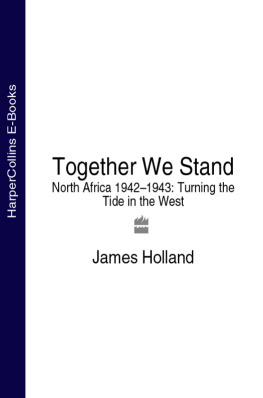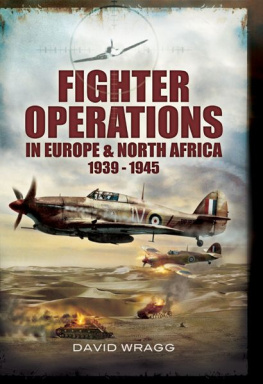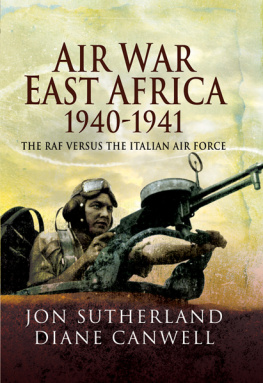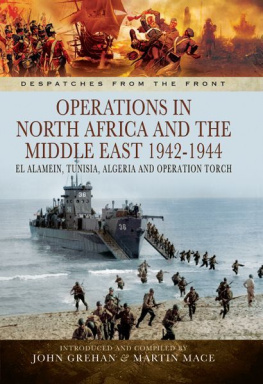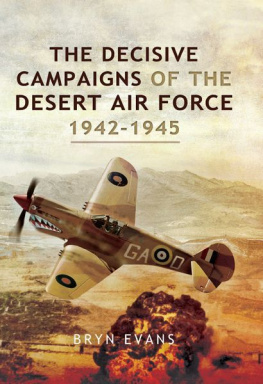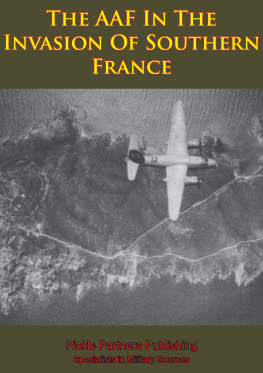

This edition is published by PICKLE PARTNERS PUBLISHING www.picklepartnerspublishing.com
To join our mailing list for new titles or for issues with our books picklepublishing@gmail.com
Or on Facebook
Text originally published in 1945 under the same title.
Pickle Partners Publishing 2013, all rights reserved. No part of this publication may be reproduced, stored in a retrieval system or transmitted by any means, electrical, mechanical or otherwise without the written permission of the copyright holder.
Publishers Note
Although in most cases we have retained the Authors original spelling and grammar to authentically reproduce the work of the Author and the original intent of such material, some additional notes and clarifications have been added for the modern readers benefit.
We have also made every effort to include all maps and illustrations of the original edition the limitations of formatting do not allow of including larger maps, we will upload as many of these maps as possible.
Wings at War No. 6
The AAF in Northwest Africa
Published by Headquarters, Army Air Forces Washington, D.C.
Office of Assistant Chief of Air Staff, Intelligence From Reports Prepared by MAAF
TABLE OF CONTENTS
Contents
FOREWORD
The AAF in Northwest Africa focuses on the Allied assault on Northwest Africa and the battle for Tunisiathe critical second front that secured the Mediterranean and increased the enemy's vulnerability to a massive invasion from Britain. From this experience of the Twelfth Air Force and its British counterparts in 1942-43 evolved a spirit of Anglo-American cooperation and important aspects of air doctrine still relevant to today's Air Force.
Originally published shortly after key air campaigns, the Wings at War series captures the spirit and tone of America's World War II experience. Eyewitness accounts of Army Air Forces' aviators and details from the official histories enliven the story behind each of six important AAF operations. In cooperation with the Office of the Secretary of Defense, the Center for Air Force History has reprinted the entire series to honor the airmen who fought so valiantly fifty years ago.
Part I The Twelfth Air Force in the Landing Operations
Impatience had reached its peak. The Soviet Union was loudly demanding that the Western Allies open a second front. British and American military leaders were hurriedly explaining that they wanted to be sure of sufficient strength before committing forces to such a task. Small but vociferous groups on both sides of the Atlantic were clamoring for aid to the hard pressed Soviet forces. Everywhere the question was being asked, "When?"
It was thus all the more electrifying when, on 8 November 1942, the word was flashed that Allied forces had landed in Northwest Africa. The war was being brought, if not immediately to Fortress Europe, then to its most vulnerable approaches.
Of great importance and effectiveness was the part in that invasion and in the later battle for Tunisia of the United States Twelfth Army Air Force. This booklet relates the role of that organization from the time the initial assault was made on the Axis buffer territory of Africa to the time when the Herrenvolk , beaten and disillusioned, were compelled to withdraw to Europe itself, there to find little comfort in the certainty that the forces they had set in motion could not be halted.
There were four chief purposes in undertaking the invasion:
- To open the Mediterranean to Allied shipping. This would shorten the haul from the North Atlantic to India and, by making unnecessary the longer route around the Cape of Good Hope, vitally increase the number of round trips which Allied shipping could make to the Orient.
- The opening of the Mediterranean would be an effective counter to the Axis Drand nach Osten , which was in danger of reaching out to meet the Japanese push toward India, and the success of which would have split the United Nations into two segments.
- Allied control of the Mediterranean would make it possible to invade Europe through Italy, the "soft underbelly" of the Axis. Italy would thus afford a springboard for further invasions, would draw part of the German strength from the Russian front, and would give strategic bombers a base within effective distance of hitherto inaccessible Axis installations.
- Last, and not by any means least, the movement would deal a serious blow to the morale of Germany and her satellites, would raise Allied morale, and would encourage those elements in the Axis-occupied countries which were working as best they could toward the defeat of the Axis.
It was planned to strike simultaneously at Casablanca, Oran, and Algiers. It was also planned that at about the same time the British Eighth Army would break Rommel's El Alamein line and advance into Tripolitania to meet the spearhead of invasion which would sweep eastward from Algiers.
Attitude of the French Toward the Allies
Certainly, it was believed, Germany would occupy Vichy France immediately upon receiving the news of the invasion, in order to forestall an Allied breaching of the southern coast of France, to establish submarine and air bases, and to control the French fleet then based at Toulon. Intelligence determined that Frenchmen in Northwest Africa probably would be neutral and that the natives would be apathetic. Civil servants, interested in their salaries and pensions, would be content to jog along under the Vichy regime. The Navy, with a long and proud tradition and composed largely of Bretons, was violently anti-British. This attitude had been strengthened by British attacks on French naval units at Oran and Dakar in 1940, and by suspicions of British designs on Bizerte. It was anticipated that the fact that the United States had now joined the British would make little difference; indeed, the French Navy considered that Anglo-Saxon sea power was a threat to the continued existence of the French colonial empire. The loyalty of the French Navy, it was evident, was not so much to Vichy as to the Service, and this loyalty among enlisted personnel was heightened by their interest in ratings and pensions, to obtain which absolute conformity to the naval hierarchy was necessary.
The French Army, on the other hand, better reflected the attitude of most metropolitan Frenchmen. Marshal Petain was personally popular, and his dealings with Germany were condoned as unavoidable. The officer corps was, to say the least, anti-foreign, but junior officers and the rank and file were inclined to favor the United States. For this reason it was decided to emphasize the American character of the invasion. The difference between the Navy and the Army was demonstrated by the resistance which each was to offer.
There were additional factors which might urge French to cooperate. The American continuance of relations with Vichy had convinced many Frenchmen of our good will, and the United States had not been involved in British actions against French colonies. The Axis had not occupied French Africa, but its armistice commissions had stripped the country of food and had reduced the population to a hand to mouth existence. The French Army was being slowly deprived of its weapons and the Navy was short of fuel. These experiences were gradually convincing the French that they could not do business with Hitler and were arousing them from their apathy. There was a chance that an Allied invasion, if predominantly American, might meet with some degree of welcome.
Next page










